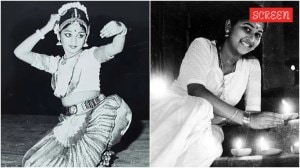Patil – a visionary who modernised markets
Some time in March 1993 when Dr RH Patil and a team of five from the Industrial Development Bank of India (IDBI) began working on the crea...

Some time in March 1993 when Dr RH Patil and a team of five from the Industrial Development Bank of India (IDBI) began working on the creation of a National Stock Exchange (NSE), nobody in the government or the capital market system gave them even an outside chance of real success.
It was designed merely as a threat, a countervailing force against the broker-run Bombay Stock Exchange (BSE) which was riddled with frequent closures, chronic defaults and delayed settlements. Its sole purpose was to force the numero uno BSE to submit to some reform, regulation and modernisation.
Eight years later, when Patil handed over the baton to a worthy successor last Friday, the fact that he then headed India’s number one exchange is only his minor achievement. His bigger feat was to visualise and lead the transformation of secondary market trading systems to one which is on par with the best in the world.
As a country which does not recognise merit unless it is accompanied by hype and self-promotion, Dr Patil’s quiet but pivotal role in transforming Indian capital markets has never been adequately recognised. In fact, it is the finance ministry and the Securities and Exchange Board of India (SEBI) which have walked away with most of the credit, but as Dr Patil steps down it is important to look back and lose sight of history. NSE’s biggest break was the fact that nobody expected much from it. Stockbrokers had successfully perpetrated the myth that brokers alone could run exchanges because nobody else understood the raucous open-outcry trading and complicated badla system. The prospect of a sarkari exchange run by a bunch development bankers was considered almost laughable.
In the circumstances, nobody coveted the top jobs at the NSE and Dr Patil was allowed to pick a team of five honest and dedicated professionals to design an ambitious exchange, without interference and obstruction from the government or vested interests.
At the time that the NSE was conceived, which was barely eight years ago the BSE accounted for over 70 per cent of India’s trading volumes. There were fortnightly trading settlements and these too were routinely delayed and merged. Trading was fraught with paper related fraud, share transfer problems, signature mismatch, broker defaults and massive counter party risk. Yet, the NSE designed a multi-location model with simultaneous access to a single trading screen and a weekly settlement. It used a VSAT-based system in order to avoid the regular telecommunications network; this was being attempted for the first time in the world for stock trading.
The faceless, automated trading took off on November 4, 1994 it was to a chorus of predictions of failure. Its members were mainly professionals who could not afford a BSE card and were encouraged to create corporate brokerage firms. Not a day passed without journalists being fed stories about the NSE’s manifold problems, potential failures and inability to cope. The NSE patiently answered all queries and refused to oblige its detractors by collapsing. The doomsday predictions only intensified at every milestone: its first settlement, its first large closeout auction, the first big dip in prices and its expansion to other cities.
So strong were the rumors that neither the institutions which promoted the NSE nor foreign institutional investors who cribbed incessantly about primitive trading systems diverted business to the new exchange. Some predicted that its very transparency would be a negative factor because the stock market attracted lots of black money. Over time, it slowly gathered support from small town investors who had no direct access either to the BSE or its top brokers and were always at the receiving end of trade prices and sub-brokers.
The NSE system provided them simultaneous access to a national system, with precise time and price information of their trades. Volumes also built up through a high order conversion into trades of 90 per cent as compared to 30 per cent in the open outcry system. After a slow six months turnover began to pick up and exactly a year and a day later on November 5, 1995, the NSE crossed the BSE’s turnover to become India’s largest stock exchange.
As NSE’s innovations to increasing market safety continued, it had to take into account the slow judicial and redressal mechanisms in India. Higher networth requirements and a comprehensive insurance for brokers were introduced, followed by a sophisticated online risk monitoring sytsem which now tracks open positions on a real time basis and automatically logs out brokers who cross trading limits.
Trading turnover continued to swell as arbitrage opportunities opened up with stock exchanges and it encouraged those bourses to automate their trading systems. When volumes crossed Rs 1000 crore, the NSE introduced a settlement guarantee a concept it borrowed from the options and futures market of Chicago. In 1998 it started a 100 per cent verification of deliveries for fake, forged and stolen shares.
Once the positive aspects of automated trading were successfully demonstrated the BSE realised that it had better modernise or perish. It took the smart option and even as it modernised, it began to lobby for nationwide expansion. But there was no longer any doubt that it was the NSE which led innovation and turnover. Trading volumes at the NSE now average Rs 6000 crore a day and combined with the BSE they together sometimes touched Rs 20,000 crore.
The next stage was the setting up of the depository to eliminate paper and paper related fraud, and introducing derivatives trading it was here that the system received active support from SEBI and government policy makers.Dr Patil deserves a huge ovation for being the biggest catalyst and driver of change in the capital market, but as he bids adieu it is also time to look ahead. The NSE is no longer the underdog, it is the market leader. As in the case of the Securities and Exchange Board of India (SEBI) after GV Ramakrishna, the top jobs in the NSE are now powerful and highly coveted. There is also the realisation that as a sarkari stock exchange, there is scope for political meddling and mindless destruction of a highly honest and professional management set up.
Dr Patil has managed to ensure a smooth transition to an equally honest, committed and professional team. It is up to the government to retain this team and encourage it, otherwise a complicated system with 5,000 trading terminals in over 305 locations could easily come apart. Investors tend to be complacent about a good system, they need to be vigilant and ensure that it remains as good.
Author’s email: suchetadalal@yahoo.com



- 01
- 02
- 03
- 04
- 05



























